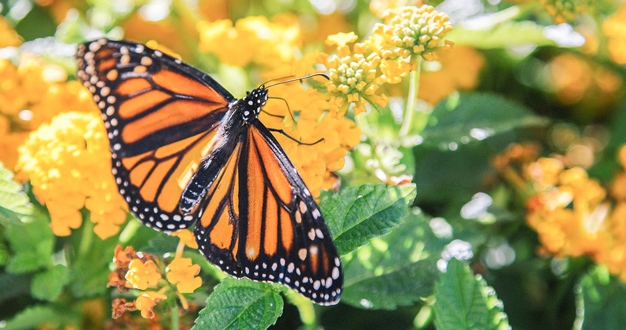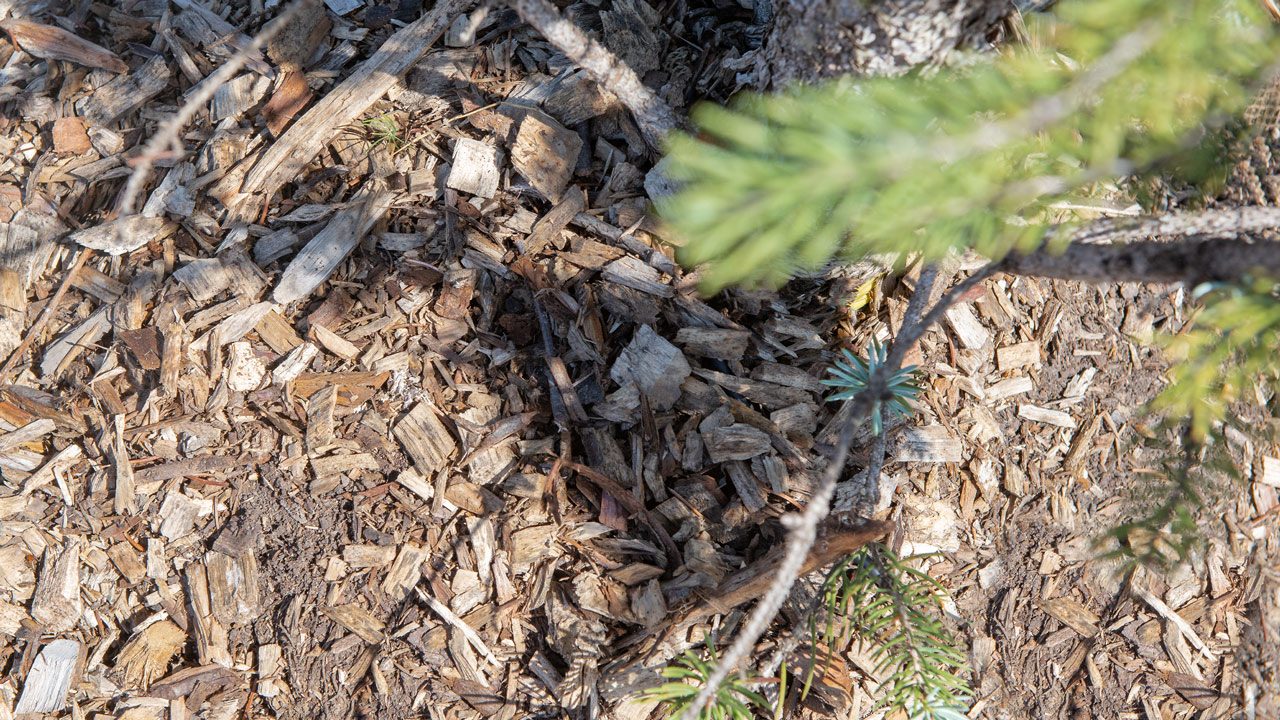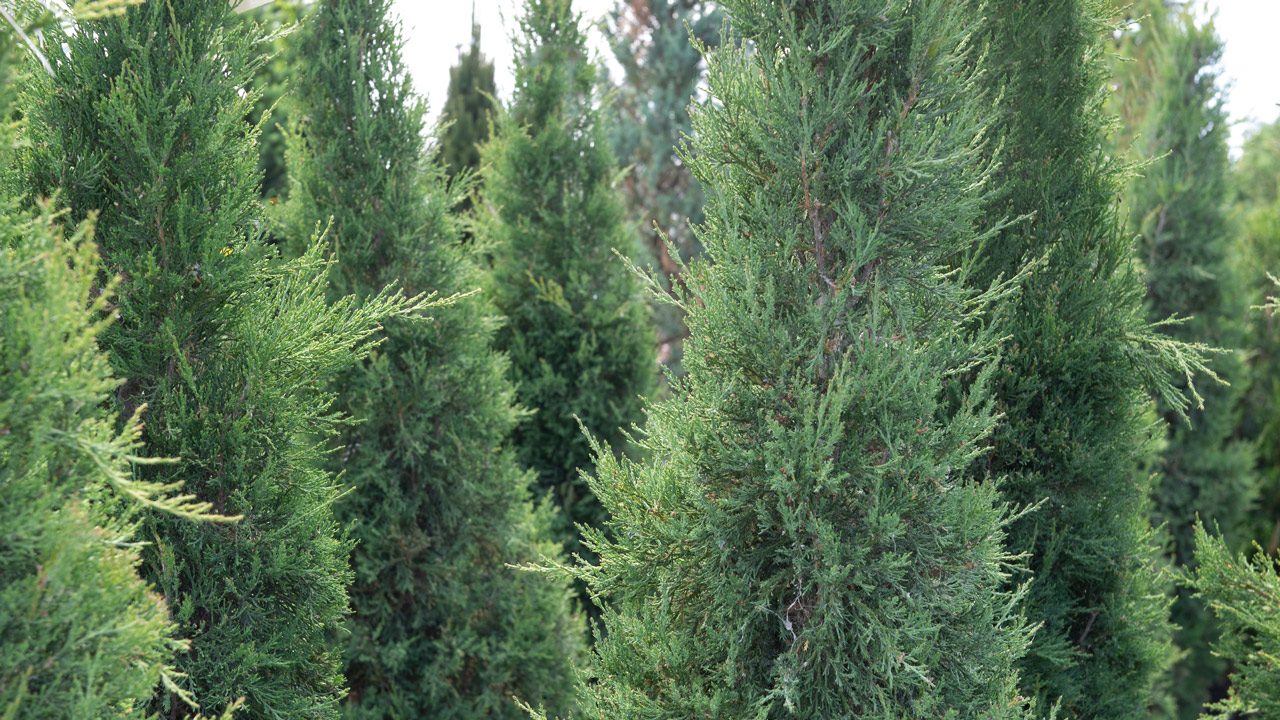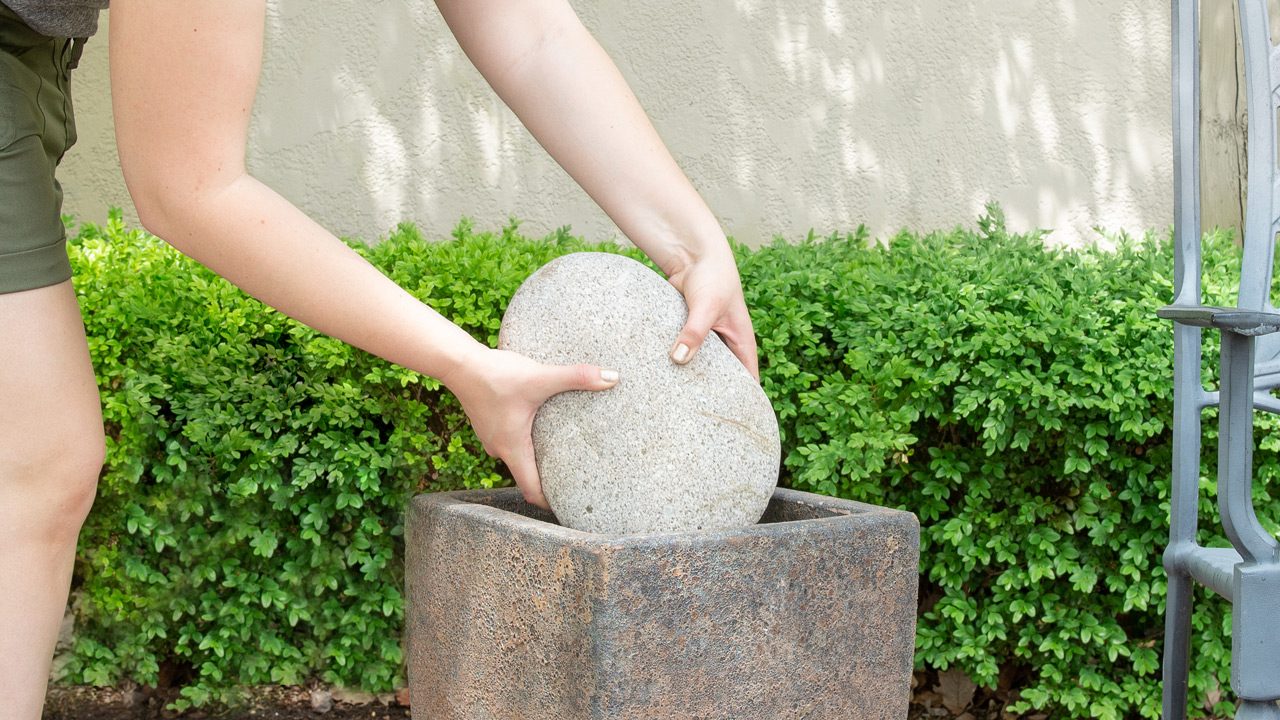
Wind is a constant companion here in the Midwest. Generally, we enjoy its pleasant effects – like that breath of refreshing air on a humid day or the way cottonwood leaves flutter in the slightest breeze. But when planning and planting our outdoor spaces, we also have to consider the wind’s occasional adverse effects too. Here we discuss the effects that wind has on our plants – the bad, but also the good. And we share our best tips for planning around the wind’s potentially damaging influences in the landscape and on the patio.
Wind + Plants
We know trees naturally sway in the wind, but it may be surprising to learn that this swaying changes the way a tree grows. It causes the tree to shift its resources to different parts of the tree – building thickness at the base of the trunk, stronger junctions at the branches, or stronger, more flexible wood. The tree may stay a bit shorter and develop smaller leaves too. This ability to slowly change shape and structure in response to wind even has a name – thigmomorphogenesis – and the phenomenon can be seen in all kinds of plants.
But wind also has adverse effects too. For one, moving air can sometimes whisk away moisture from the foliage faster than the plant can replace it. This is especially true for evergreens in the winter. The soil around the plant dries faster in the wind too. And of course, a particularly strong wind can strip leaves and break branches – or even uproot the plant entirely.
Luckily, with the right plants and a few helpful gardening practices, we can take advantage of the wind’s positive influences, minimize its negative ones, and grow beautiful, healthy plants in all our outdoor spaces.


In the Landscape
Create a Windbreak
One of the best ways to reduce the negative effects of wind on your landscape is to create a windbreak. A fence can be a good windbreak, but often, it’s too good at blocking the wind. When a strong wind strikes the windward side, the air rises quickly against the fence then drops quickly over the protected side. This creates a lot of turbulence behind the windbreak and somewhat defeats its purpose. A better solution is to use plants as a natural windbreak. The trunks, branches, and foliage mitigate the wind’s strength while still allowing some of the air to flow through.
In a small space, a single row of evergreens – such as juniper or spruce – is a simple and effective windbreak. If you have more room to work with, a mixed planting made up of two or more rows of trees and shrubs in different heights and textures can serve double-duty as a beautiful landscape design and wildlife habitat while also blocking the wind for other spaces. For more information, Nebraska Extension has a great resource for designing an effective windbreak.
Choose Wind-Resistant Trees
If wind is a big concern in your area, you might choose to plant trees that are known to have strong wood and a good branching structure – like sugar maple, paper birch, American beech, oaks, baldcypress, hophornbeam, or hackberry. For particularly windy areas, avoid planting fast-growing trees – like silver maple, river birch, or tulip tree – which tend to have weaker wood, making them more vulnerable to breaking in high wind.
Conserve Moisture
Watering plants in a windy landscape can be a challenge too – the spray from overhead sprinklers evaporates quickly or simply blows away before it reaches the soil. That’s one reason why calm, early mornings are the ideal time to water. Or if possible, we recommend using drip irrigation or hand-watering to direct the water exactly where the plant needs it – the root system. To keep a more consistent level of soil moisture in your landscape beds, don’t forget to add mulch too.
Stake Loosely
Young, newly transplanted trees may need to be staked to protect them from being uprooted or tilted in windy locations. But remember that swaying actually helps a tree develop a sturdy trunk, flexible branches, and a strong root system. When a tree is staked too tightly, it actually becomes dependent on having that support. Instead, stake your tree loosely enough to allow a bit of swaying, and be sure to remove the stakes and ties after a year or so.


On the Patio
Make Your Containers Stable
Sometimes outdoor containers can become top-heavy after planting, which of course makes them vulnerable to tip in a strong wind. The solution is to lower the center of gravity in the arrangement by adding weight to the bottom of the container. This can be done by placing rock or brick in the bottom of the pot – without blocking the drain hole – before adding soil or your fiber slip pot. Another solution is to choose large or heavy pots with wide bases to improve the container’s stability.
Choose Plants that Flutter
Tropical plants with large, broad leaves are beautiful, but they can act like a sail in the wind, taking the entire arrangement on a scary ride. Some plants – like bird of paradise – have adapted to this by letting their leaves naturally split into segments, reducing the wind pressure on the foliage while still allowing the plant to stay upright. Other plants are simply designed with ribbon-like foliage. Phoenix roebellini is a great example. This beautiful blue-green palm has multiple stout trunks and highly dissected fronds that let the breezes pass right through. Some other good options for the patio include spindle palm and Kimberly queen fern.
Add Support
Adding a stake is another great way to keep tall container plants from toppling in the wind. Make sure the stake is tall enough to reach deep into the soil while also reaching half the height of the plant, and be sure to secure the plant with a soft tie material. To create even more stability, pack the soil around the root ball a little more than you normally would.
Water Regularly
Just like plants in the landscape, container plants and their soil will dry out more quickly in the wind. Regularly replacing the moisture in the soil is not only good for the plants’ health, it also keeps the container heavier too.
Set Your Landscape for Success
Wind can be a joy or a menace, but with preparation, we can continue to cultivate all the beauty we want in our outdoor spaces. Need suggestions for your own wind-swept spot? Just ask – we’re here to help.


